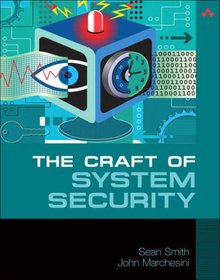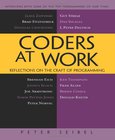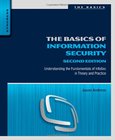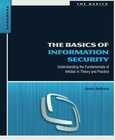The Craft of System Security

Book Details:
| Publisher: | Addison-Wesley Professional |
| Series: | Addison Wesley |
| Author: | Sean W. Smith |
| Edition: | 1 |
| ISBN-10: | 0321434838 |
| ISBN-13: | 9780321434838 |
| Pages: | 592 |
| Published: | Dec 01 2007 |
| Posted: | Nov 19 2014 |
| Language: | English |
| Book format: | CHM |
| Book size: | 5.29 MB |
Book Description:
"I believe The Craft of System Security is one of the best software security books on the market today. It has not only breadth, but depth, covering topics ranging from cryptography, networking, and operating systems--to the Web, computer-human interaction, and how to improve the security of software systems by improving hardware. Bottom line, this book should be required reading for all who plan to call themselves security practitioners, and an invaluable part of every university's computer science curriculum." --Edward Bonver, CISSP, Senior Software QA Engineer, Product Security, Symantec Corporation "Here's to a fun, exciting read: a unique book chock-full of practical examples of the uses and the misuses of computer security. I expect that it will motivate a good number of college students to want to learn more about the field, at the same time that it will satisfy the more experienced professional." --L. Felipe Perrone, Department of Computer Science, Bucknell University Whether you're a security practitioner, developer, manager, or administrator, this book will give you the deep understanding necessary to meet today's security challenges--and anticipate tomorrow's. Unlike most books, The Craft of System Security doesn't just review the modern security practitioner's toolkit: It explains why each tool exists, and discusses how to use it to solve real problems. After quickly reviewing the history of computer security, the authors move on to discuss the modern landscape, showing how security challenges and responses have evolved, and offering a coherent framework for understanding today's systems and vulnerabilities. Next, they systematically introduce the basic building blocks for securing contemporary systems, apply those building blocks to today's applications, and consider important emerging trends such as hardware-based security. After reading this book, you will be able to Understand the classic Orange Book approach to security, and its limitations Use operating system security tools and structures--with examples from Windows, Linux, BSD, and Solaris Learn how networking, the Web, and wireless technologies affect security Identify software security defects, from buffer overflows to development process flaws Understand cryptographic primitives and their use in secure systems Use best practice techniques for authenticating people and computer systems in diverse settings Use validation, standards, and testing to enhance confidence in a system's security Discover the security, privacy, and trust issues arising from desktop productivity tools Understand digital rights management, watermarking, information hiding, and policy expression Learn principles of human-computer interaction (HCI) design for improved security Understand the potential of emerging work in hardware-based security and trusted computing
Download Link:
Related Books:
Coders at Work
Reflections on the Craft of Programming
Peter Seibel interviews 15 of the most interesting computer programmers alive today in Coders at Work, offering a companion volume to Apresss highly acclaimed best-seller Founders at Work by Jessica Livingston. As the words at work suggest, Peter Seibel focuses on how his interviewees tackle the day-to-day work of programming, while revealing much more, like how they became great programmers, how they recognize programming talent in others, and what kinds of problems they find most interesting. Hundreds of people have suggested names of programmers to interview on the Coders at Work web site: www.codersatwork.com. The complete list was 284 names. Having digested everyones feedback, we selected 15 folks whove been kind enough to agree to be interviewe...
The Basics of Information Security
Understanding the Fundamentals of InfoSec in Theory and Practice
2nd Edition
As part of the Syngress Basics series, The Basics of Information Security provides you with fundamental knowledge of information security in both theoretical and practical aspects. Author Jason Andress gives you the basic knowledge needed to understand the key concepts of confidentiality, integrity, and availability, and then dives into practical applications of these ideas in the areas of operational, physical, network, application, and operating system security. The Basics of Information Security gives you clear-non-technical explanations of how infosec works and how to apply these principles whether you're in the IT field or want to understand how i...
The Basics of Information Security
Understanding the Fundamentals of InfoSec in Theory and Practice
The Basics of Information Security provides fundamental knowledge of information security in both theoretical and practical aspects. This book is packed with key concepts of information security, such as confidentiality, integrity, and availability, as well as tips and additional resources for further advanced study. It also includes practical applications in the areas of operations, physical, network, operating system, and application security. Complete with exercises at the end of each chapter, this book is well-suited for classroom or instructional use. The book consists of 10 chapters covering such topics as identification and authentication; authorization and access control; auditing and accountability; cryptography; operations security; physica...
2007 - 2021 © eBooks-IT.org



